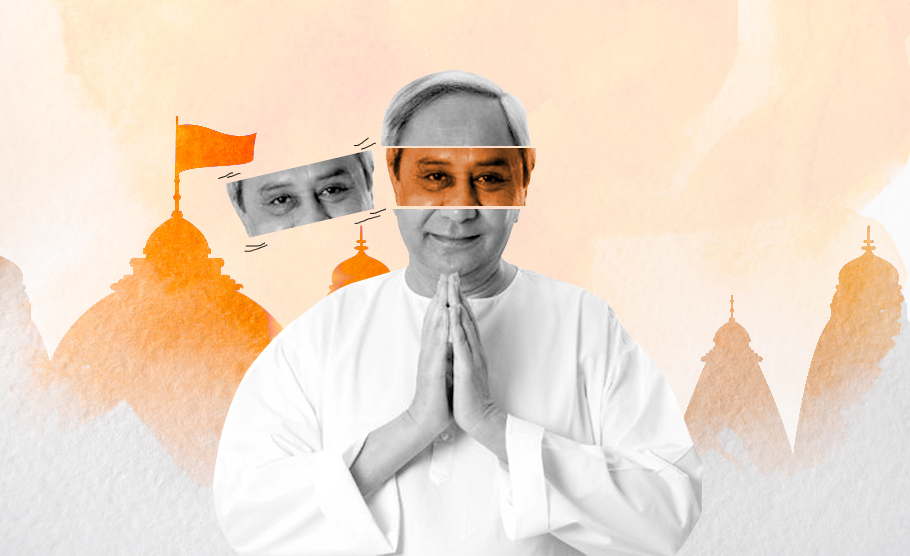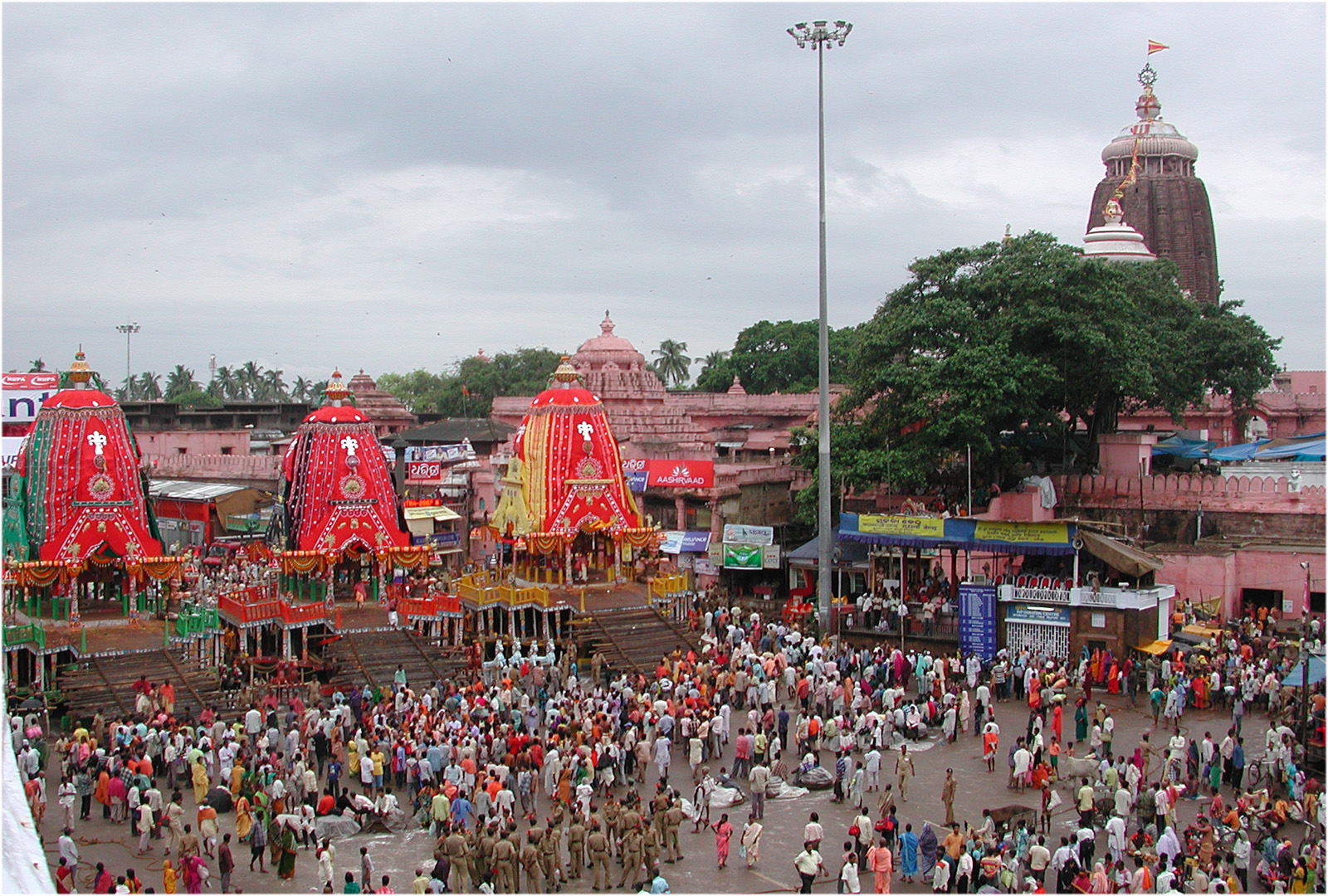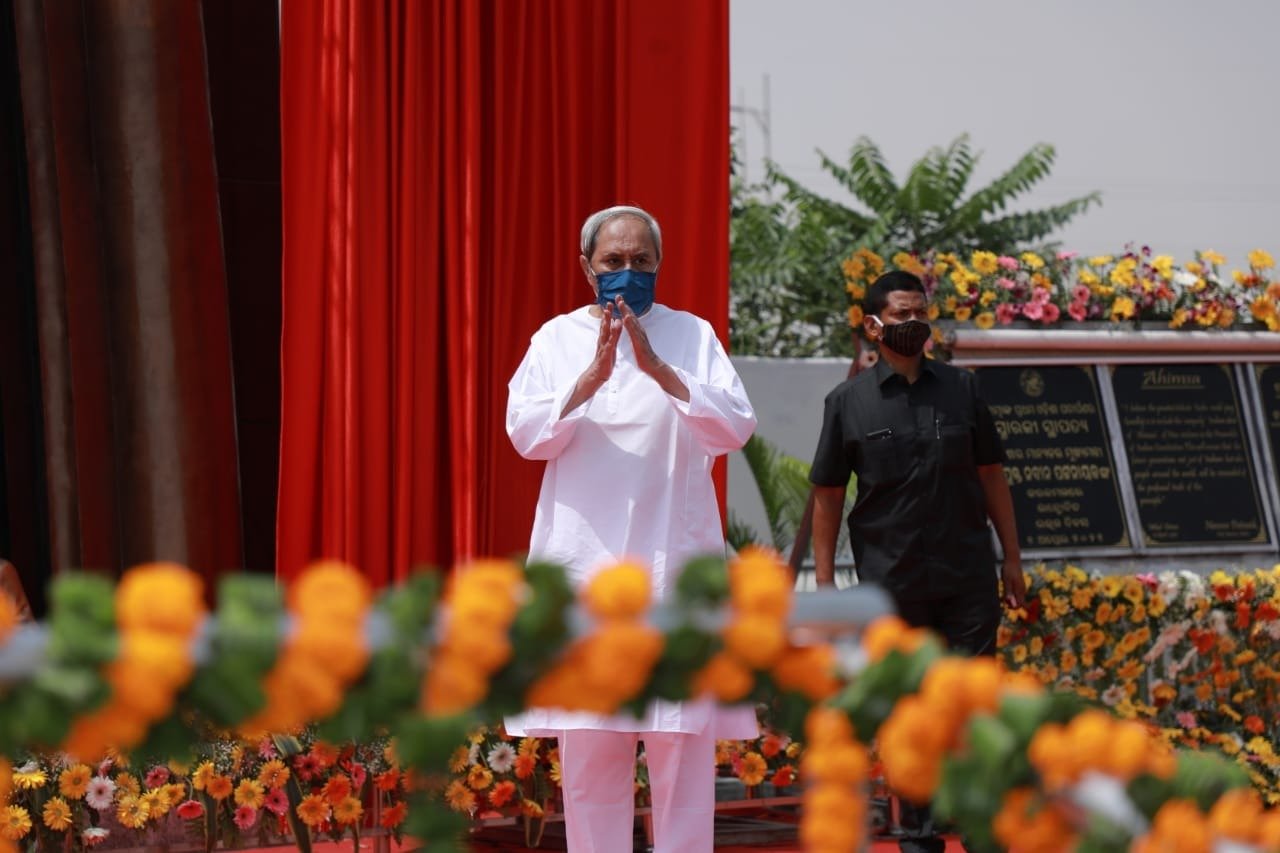
- Home
- News
- Analysis
- States
- Perspective
- Videos
- Education
- Entertainment
- Elections
- Sports
- Features
- Health
- Budget 2024-25
- Business
- Series
- Bishnoi's Men
- NEET TANGLE
- Economy Series
- Earth Day
- Kashmir’s Frozen Turbulence
- India@75
- The legend of Ramjanmabhoomi
- Liberalisation@30
- How to tame a dragon
- Celebrating biodiversity
- Farm Matters
- 50 days of solitude
- Bringing Migrants Home
- Budget 2020
- Jharkhand Votes
- The Federal Investigates
- The Federal Impact
- Vanishing Sand
- Gandhi @ 150
- Andhra Today
- Field report
- Operation Gulmarg
- Pandemic @1 Mn in India
- The Federal Year-End
- The Zero Year
- Premium
- Science
- Brand studio
- Newsletter
- Home
- NewsNews
- Analysis
- StatesStates
- PerspectivePerspective
- VideosVideos
- Entertainment
- ElectionsElections
- Sports
- Features
- BusinessBusiness
- Premium
- Loading...
Premium - India-Canada ties

What's the real drive behind temple facelifts in Odisha — tourism promotion or soft Hindutva?
Into his fifth consecutive term as Odisha Chief Minister, Naveen Patnaik announced his ambitious plan to develop Puri, the abode of Lord Jagannath, into a world heritage city.

Months after he began his fifth consecutive innings as Odisha Chief Minister in 2019, when Naveen Patnaik announced his ambitious plan to develop Puri, the abode of Lord Jagannath, into a world heritage city, a majority of the Odias were happy. Old, historical mutts, mostly in dilapidated condition, and other structures located within a radius of 75 metres around the main temple, Shri Mandir...
Months after he began his fifth consecutive innings as Odisha Chief Minister in 2019, when Naveen Patnaik announced his ambitious plan to develop Puri, the abode of Lord Jagannath, into a world heritage city, a majority of the Odias were happy.
Old, historical mutts, mostly in dilapidated condition, and other structures located within a radius of 75 metres around the main temple, Shri Mandir were razed to the ground without much resistance, thanks to the government’s mouth-watering rehabilitation and resettlement package.
In February this year, the state Assembly unanimously passed the resolution for the development of the Shree Jagannath Temple under the “Shreemandira Parikrama Yojana” or the Jagannath Temple Heritage Corridor Plan, which aims at enhanced security of the 12th century shrine, better amenities for devotees and creation of a spiritual ambience.
While moving the resolution in virtual mode, Naveen said, “The greatest identity of Odia community is Lord Jagannath, our history, culture, traditions and our beliefs are all based on the Lord. He is the symbol of Odia esteem.”
He went on to say that, all devotees who visit the Shri Mandir have only one desire—to get the darshan of Lord Jagannath in a serene atmosphere. “Millions of devotees pray to visit the Jagannath Temple once in a lifetime and get a glimpse of the Lord. It is the responsibility of all of us to ensure that all devotees return with a divine feeling.”
The project’s draft architectural plan and design, with an estimated cost of ₹3,200 crore, was earlier approved by the temple management committee and sent to the state government for approval.
However, it is not the Jagannath temple alone that is going to witness a facelift. The Odisha government has embarked on a drive for infrastructure development and beautification of several other temples including Bhubaneswar’s Lingaraj, Samaleswari (in Sambalpur) and Tara Tarini temple in Ganjam district.
While the government intends to spend ₹700 crores for Lingaraj temple, a ₹200-crore package has been announced for the famous Samaleswari temple. Meanwhile, the plan for development of Tara Tarini, a ‘Shakti peeth’ has been approved. There have been announcements for temples in Mayurbhanj and Kendrapara as well.

Naveen’s new enthusiasm
Senior Congress leader Arya Kumar Gyanendra tries to deflate the major move, saying, despite a decisive mandate and long tenure, Naveen has failed to do anything which could stand the test of time. “It was ex-Congress chief minister JB Patnaik who had conferred industry status to hotel business.”
“Even the Kalinga stadium in Bhubaneswar—the venue of the 2018 men’s Hockey World Cup—that the government is proudly showcasing, was built during the Congress period. The temple beautification drive is nothing but to counter the BJP, which is likely to turn all its focus on Odisha after the West Bengal polls are over,” reasons Gyanendra.
“The BJD and BJP were together till 2009 and while the UPA was in power at the Centre up to 2014. However, Naveen’s (now) alarmed after the Narendra Modi-led NDA came to power in Delhi,” added the Congress leader.
Interestingly, the development of temples was never a priority for Naveen in his first four terms. The Chief Minister is not even overtly religious. Therefore, his temple hopping and enthusiasm for beautification projects has raised eyebrows.
While many believe that the initiative will improve (religious) tourism and help boost the economy, critics say it is Naveen’s way of silencing the Bharatiya Janata Party (BJP).
Some feel that the BJP has a habit of painting others as insensitive to Hindu religious and cultural sensibilities and aspirations purely for political mileage. It just needs an issue to mobilize the people. Shrewd Naveen is well aware of that.
To be fair, the government is also aggressively promoting tourism. For tourists, apart from the temple, the beautiful long beach and the nearby world famous Sun Temple in Konark, makes Puri the most favoured destination in Odisha. Throughout the year, Puri witnesses a large number of tourists.
Senior journalist Priya Ranjan Sahu feels that development of religious sites is a well thought out political strategy. But he points to the difference: “Unlike the BJP in Uttar Pradesh, it (beautification) is being done by Naveen in a sophisticated way.”
BJP’s rise
On the other hand, Sahu says in the face of the aggressive manner in which the BJP has played the religious card, particularly since 2014 and bulldozed opponents, the soft Hindutva approach has become a political compulsion for others to safeguard their turf. Delhi chief minister Arvind Kejriwal and Mamata Banerjee in West Bengal too have tried it.
With Odisha becoming prominent on its radar post 2014, the BJP has been rigorously trying to expand its base in the coastal state, and it has also succeeded to an extent. Although the western pockets of the state are considered its traditional stronghold, the saffron party has steadily made inroads into other parts, including the coastal region.

The 2017 panchayat polls saw the party rise from 36 seats in 2012 to 296. Two years later, in the 2019 assembly polls, due to its sudden upsurge, it was widely viewed as a potential challenger to Naveen’s Biju Janata Dal (BJD).
Perhaps that’s why, many believe, Naveen hurriedly announced the farmers’ assistance (KALIA) scheme. And unruffled by the notorious heat and humidity of April, he extensively campaigned across the state. Both paid off—in the 147-seat assembly, the BJD won 113.
Although the BJP failed to breach the BJD fort or its well-oiled grassroots level political machinery, with 23 seats, it pushed the Congress to the third position and became the principal opposition party in the state.
It also improved its Lok Sabha tally to eight from one (2014). Surprisingly, the saffron party’s vote share in the Lok Sabha polls jumped to 38.4 per cent from 21.5 (2014). In the assembly polls, it had gone up from 18 per cent (2014) to 32 percent in 2019.
Last September, an ebullient BJP president, JP Nadda had declared in Bhubaneswar: “The days are not far when we will form government in Odisha.” He also added,” “Our spirited cadre is the reason behind the steady rise of the party in the state. We must take a vow to further increase our vote share 50 pc in next election to form the government.”
But it may be too soon to be so confident. Despite Hindus forming a whopping 93.6 percent of population majority of Odisha’s over-4.3 crore population, and Christians and Muslims comprising 2.77 and 2.17 percent respectively, religion has never been a poll issue in the state.
Neither tribals nor Dalits, who form 24 and 17 percent of the state’s population respectively, have voted along caste lines. Elections in the state have always been leadership driven.
The local BJP is cautious though. “It’s (temple facelift schemes are) in the interest of the devotees. I am surprised Naveen babu remembered the temples after 20 years of his rule,” says BJP state president, Samir Mohanty.
Other pressing issues
Senior BJD leader Amar Prasad Satpathy dismisses the BJP factor and maintains that there is no political intent behind the beautification of religious sites programme.
“Where is the competition with the BJP?” he asks. “It’s a flagship programme. The aim is to protect monuments, attract tourists and augment the economy. Odisha has huge tourism potential and it’s the government’s priority to promote tourism.”
Whether it is the fear of BJP or not that triggered the massive temple facelift move, critics point to more pressing issues that need attention.
Many like sociologist Rita Ray question the necessity to spend so much money on beautification of religious sites and termed it ‘wastage of public money’. “It’s inhuman, criminal and democratic blackmailing of people.”
“We haven’t even thought of setting up a decent educational institution or hospital in the state, I don’t know why,” she rues.
Ray however agrees that it’s important to preserve the rich heritage structures which are archaeological marvels and absolutely priceless. “We must maintain it properly and keep it clean. We have no right to damage or try to recreate the same.”
Former bureaucrat Aurobindo Behera too holds that giving facelifts to temple surroundings is a good thing. However, he added, “There are other pressing priorities which should receive the government’s attention, as well.”
Senior CPI leader Rama Krushna Panda says there are sectors that need immediate attention—healthcare, education and employment generation. But “the government is spending hundreds of crores on temple beautification to draw public sentiment”.
He also highlights the terrible Covid-19 situation. “We don’t even have adequate manpower to carry out the vaccination programme. The government lacks sensitivity.”
As on April 22, Odisha had registered 28,971 Covid-19 cases. With cases rising constantly, state health secretary asked private hospitals to reserve 50% beds for Covid patients, as they were turning positive patients away, increasing the burden on government hospitals. And it had vaccinated 53 lakh people, with around 4 crore left to go.
CM @Naveen_Odisha spoke to PM @narendramodi over phone & discussed #COVID19 situation in the country. CM said it is a war-like situation & #Odisha will extend all cooperation at the national level including ramping up oxygen production to assist other states in this emergency.
— CMO Odisha (@CMO_Odisha) April 22, 2021
But here too Naveen seems to be playing his cards right. In fact, when states were fighting with the Centre for vaccines, the CM urged PM Modi to make vaccines available in the open market for states, a move the Centre announced within a day.
Besides the vaccine, at a time when several hospitals across the country are facing oxygen shortage, and governments are being publicly deprecated over its management, Naveen has tapped into its over-70 industries—like Rourkela Steel Plant and Jindal Steel—that produce industrial oxygen, and facilitated the supply of medical oxygen to other states. The CM also assured the PM that “Odisha will extend all cooperation at the national level including ramping up oxygen production to assist other states in this emergency”.
It remains to be seen how 74-year-old Naveen Patnaik, who is known to be a shrewd politician and has remained the most popular leader in Odisha, tackles the Covid crisis and keeps the faith of the people.

